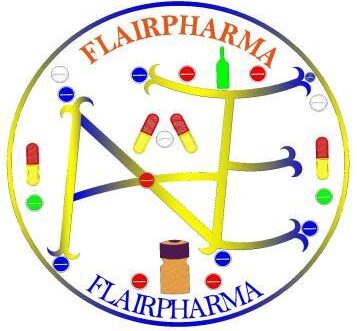In modern pharmaceutical facilities Operational Qualification Protocol for Building Management System (BMS), precision environmental control is critical to ensuring product quality and regulatory compliance. A Building Management System (BMS) serves as the technological backbone that manages Heating, Ventilation, and Air Conditioning (HVAC) operations through intelligent automation. Before operational deployment, the BMS must undergo a rigorous Operational Qualification (OQ) to verify that all system components perform as intended under simulated operating conditions.

This article presents a detailed, technical overview of the Operational Qualification Protocol cum Report for a BMS, particularly focusing on its application to Air Handling Units (AHUs) in compliance with regulatory expectations such as 21 CFR Part 11, cGMP, and WHO TRS guidelines.
1. Purpose and Scope
The objective of the Operational Qualification is to verify and document that the BMS system functions reliably and reproducibly within its full range of operation. The protocol is specifically applicable to PC-based automation and control systems implemented in pharmaceutical-grade environments for AHUs and associated equipment.

2. System Architecture Overview
The BMS architecture consists of:
- DDC (Direct Digital Control) Controllers: Programmable, microprocessor-based units responsible for localized control of HVAC systems. They support standalone operation and are capable of PID control (Proportional, Integral, Derivative) and adaptive logic.
- Operator Workstation: A supervisory interface where real-time monitoring, scheduling, trend analysis, and manual override operations are executed.
- Sensors and Actuators: Field devices such as temperature sensors, humidity transducers, differential pressure switches, modulating valves, and Variable Frequency Drives (VFDs) for fan control.
- Peer-to-Peer Communication: Fast, Ethernet-based data exchange enabling DDCs to function independently of the Process Data Manager (PDM), ensuring robust, decentralized operation.
In failure scenarios, DDCs have local data archiving capabilities (e.g., 5,000 events) to ensure data retention and recovery.
3. Qualification Strategy
3.1 Pre-Qualification Checklist
- Verification of control philosophy documentation
- Calibration certificates for sensors and actuators
- Software versioning and hardware configuration records
- Electrical and communication wiring inspection
3.2 OQ Procedure and Acceptance Criteria
The qualification activities encompass:
- Functionality tests for system screens and interfaces
- Verification of command execution (ON/OFF, SCHED)
- Real-time feedback via status indicators (RUN/TRIP, AUTO/MANUAL)
- Modulation tests for CHW (Chilled Water), HW (Hot Water) valves
- VFD speed modulation based on airflow (CFM) setpoints
- Alarm simulation and acknowledgment behavior
- Access control and user privilege verification
- Electronic data integrity checks
All results must conform to the defined system specifications and must not present critical deviations unless documented with corrective actions and retesting.
4. Operational Qualification Tests (Detailed View)
4.1 Graphics Screen Verification
Screens including Home, Architecture Overview, AHU Summary, and individual AHU units (e.g., AHU-GF-01) are verified for:
- Accurate rendering
- Real-time parameter display
- Navigation functionality

4.2 AHU Command Tests
| Function | Methodology | Expected Result |
|---|---|---|
| ON/OFF | Auto mode via GUI or physical selector | Fan activates/deactivates accordingly |
| SCHED Mode | Automatic operation as per predefined schedule | Unit cycles per schedule |
| Manual Override | Selector switch to Manual | GUI command disabled, local push button active |

4.3 Modulation of Control Valves
- Chilled Water Valve (CHW): Modulates based on RA temperature and humidity. Control logic adjusts opening percentage to meet setpoints.
- Hot Water Valve (HW): Activates heating coil when RA temperature drops below setpoint; closes upon exceeding threshold.
4.4 VFD Speed Control
Fan speed is adjusted based on the comparison between actual airflow (CFM) and setpoint:
- Increase speed if actual CFM < setpoint
- Decrease speed if actual CFM > setpoint

4.5 Trend and Data Logging
Continuous recording and graphical plotting of:
- RA Temperature and RH (Setpoint and Process Value)
- CFM
- CHW command status
- Run/Trip conditions
Ensures audit trail for retrospective analysis and GMP compliance.
5. Security and User Access Control
The BMS adheres to electronic records and signature regulations by implementing multi-tiered user access levels. A security verification test confirms:
- Login restricted to authorized users with secure credentials
- Role-based access: Administrator, Manager, Supervisor, and Operator
- Limitation on operations such as setpoint adjustments, override commands, and trend viewing based on privileges
6. Deviation Handling and Documentation
Any deviation observed during qualification is documented with:
- Nature of the deviation
- Impact assessment
- Corrective and preventive actions (CAPA)
- Re-qualification results (if applicable)
Only after satisfactory resolution can the system be deemed operationally qualified.

7. Training and Competency Records
All personnel involved in operating or maintaining the BMS must undergo training. The training records include:
- Participant names and signatures
- Trainer validation
- Area of operation assigned
This ensures that only trained individuals interact with the qualified system.
8. Conclusion and Certification
Upon successful completion of all tests and resolution of any deviations:
- A summary report consolidates all observations
- The QA team, along with system stakeholders, signs off on the qualification
- The BMS is released for validated use within the GMP environment
Operational Qualification Protocol for Building Management System (BMS)

